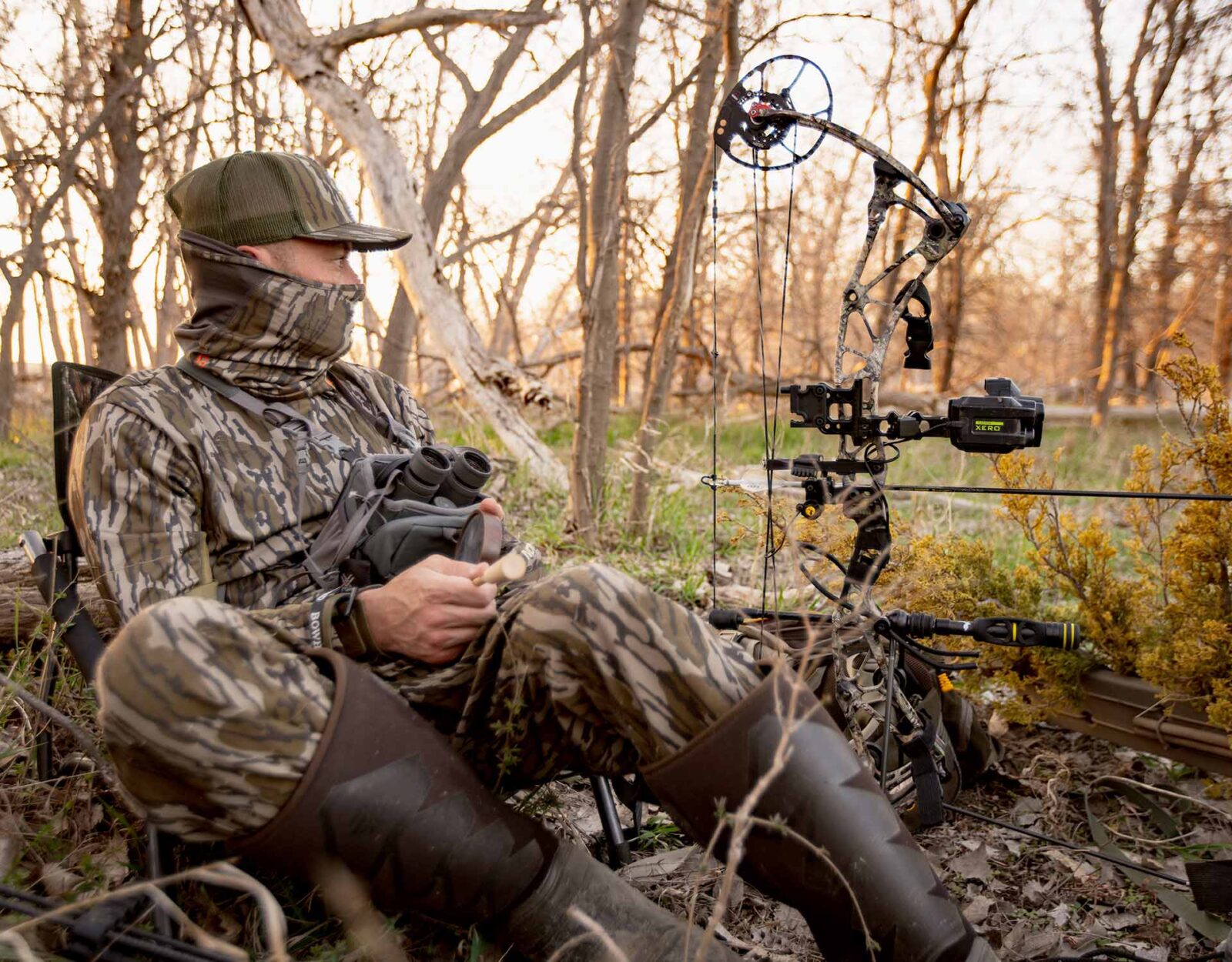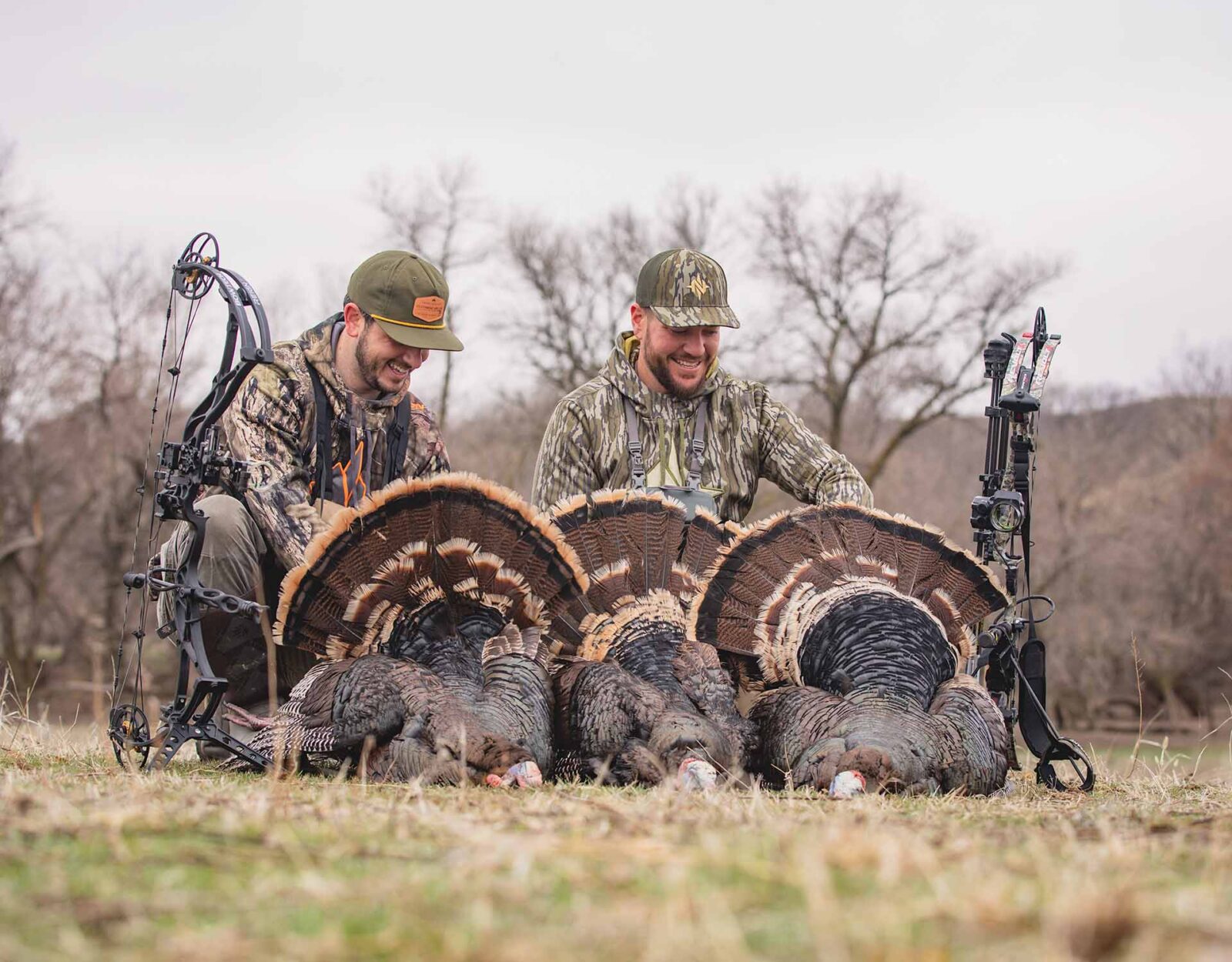Whether you’re an avid archery hunter or ready to take the leap from shotgunning turkeys to letting loose an arrow in a big tom, it’s paramount to have pinpoint accuracy on these relatively small targets. In this guide, we’ll show you exactly where to shoot a turkey with a bow when it’s broadside, quartering-to, head-on, or facing away.

Turkey Anatomy
It’s blatantly obvious how much smaller a turkey is than a deer, so it follows that a turkey’s anatomy is substantially smaller as well. Whereas a deer’s heart is roughly the size of a grapefruit, so too is a turkey’s entire heart-and-lung area. Add to that the fact that turkeys do not bleed much if they run, and they can fly, it’s important to shoot a lethal arrow that grounds the bird immediately.
To visualize the difference in target size between a deer and a turkey’s vital area when practicing your shots, hang the standard nine-inch paper plate that we are taught to be able to hit on a deer. Next, trace a grapefruit, or softball, or just measure out a 5-inch circle on the plate. See how many arrows you can group inside that circle at different distances. Be mindful that most experienced bowhunters consider 20-25 yards the furthest ethical distance to shoot a turkey with a bow, but many limit their shots to under 15 yards.
Now let’s look at all the best places to shoot a turkey with a bow, ranked from most recommended to least. However, all of the below turkey shot placements should be lethal if executed correctly.
Turkey Shot Placement Angles
Straight-on: Head or Neck
The straight-on head or neck shot is the preferred shot to take on a turkey with a bow. It’s 100 percent lethal and a common angle you’ll encounter in the field. Why is it common? Because you’re likely calling in that gobbler and he’s coming toward you. Or he’s coming in to check out the decoy from behind and will straddle up next to it, facing you head-on.
Another reason the head or neck is a great shot for bowhunting turkeys is you’ll have a clear point at which to aim—dead center about one inch above the beard. Plus, if you miss high, you’ll hit the neck, which is lethal. If you hit low, you’ll hit vitals—also lethal.
Broadside: Strutting
Another common shot you’ll encounter is the broadside strutting shot, and like the straight-on shot, it gives you a visual target: There’s a black triangle formed by the upper and lower wing. Some hunters will aim exactly at this triangle while others prefer to aim an inch behind it. Either is lethal.
If the tom is not strutting, the point of aim should be in line with the legs and halfway up the turkey’s body. There may be a dark bar of feathers that separates the upper and lower wing; aim directly in front of those feathers.
Quartering Toward: Intersection of Beard Base & Offside Leg
The quartering-toward bow shot is more challenging because the bird can see you drawing quite easily. Depending on whether the bird is strutting, you’ll have two options for this shot.
For a standing turkey, aim your pin up the far leg until it lines up with the base of the tom’s beard. That’s your spot.
If the tom is strutting, look for that same dark triangle we discuss above. Put your pin on the leading edge of that triangle. There’s your lethal shot.
Facing Away: Texas Heart Shot
The classic “Texas Heart Shot” is often joked about, but with archery turkey hunting, it can be an effective and lethal shot. Hunters will take this shot if it’s the only one presented to them, but don’t be mistaken by waiting for the tom to turn his backside to you because you think he can’t see you back there.
Turkeys have a 270-degree field of vision at all times, so it only takes the slightest turn of the head to make it 360 degrees. However, if that tom is strutting and his tail feathers are spread, he’s essentially blinded himself to this shot.
The right place to aim is at the turkey’s vent, which is at the base of all its tail feathers. Often, hunters who are trying to take this shot will rush it because the bird is likely actively walking away, but don’t rush. Make sure you have the shot so the arrow will enter the bird and connect with its vitals.

A Note on Broadheads
While some bowhunters might use fixed-blade broadheads for turkey hunting, it’s far better to use quality mechanical heads that offer a two-inch cutting diameter. Fixed-blades reduce one’s cutting diameter and you’ll have much less margin for error.
You can find mechanical broadheads with two- and three-inch cutting diameters and with two or three expandable blades. Shoot the one that’s most comfortable and consistent for you.
~~~
If there’s any failsafe advice to give bowhunters, it’s to be patient when that tom comes into range. Let the turkey come in close and present the shot you want to take. Practice all these shots on 3D turkey targets and from your exact setup (i.e. ground blind, sitting against a tree, etc.). Patience and practice will pay off.